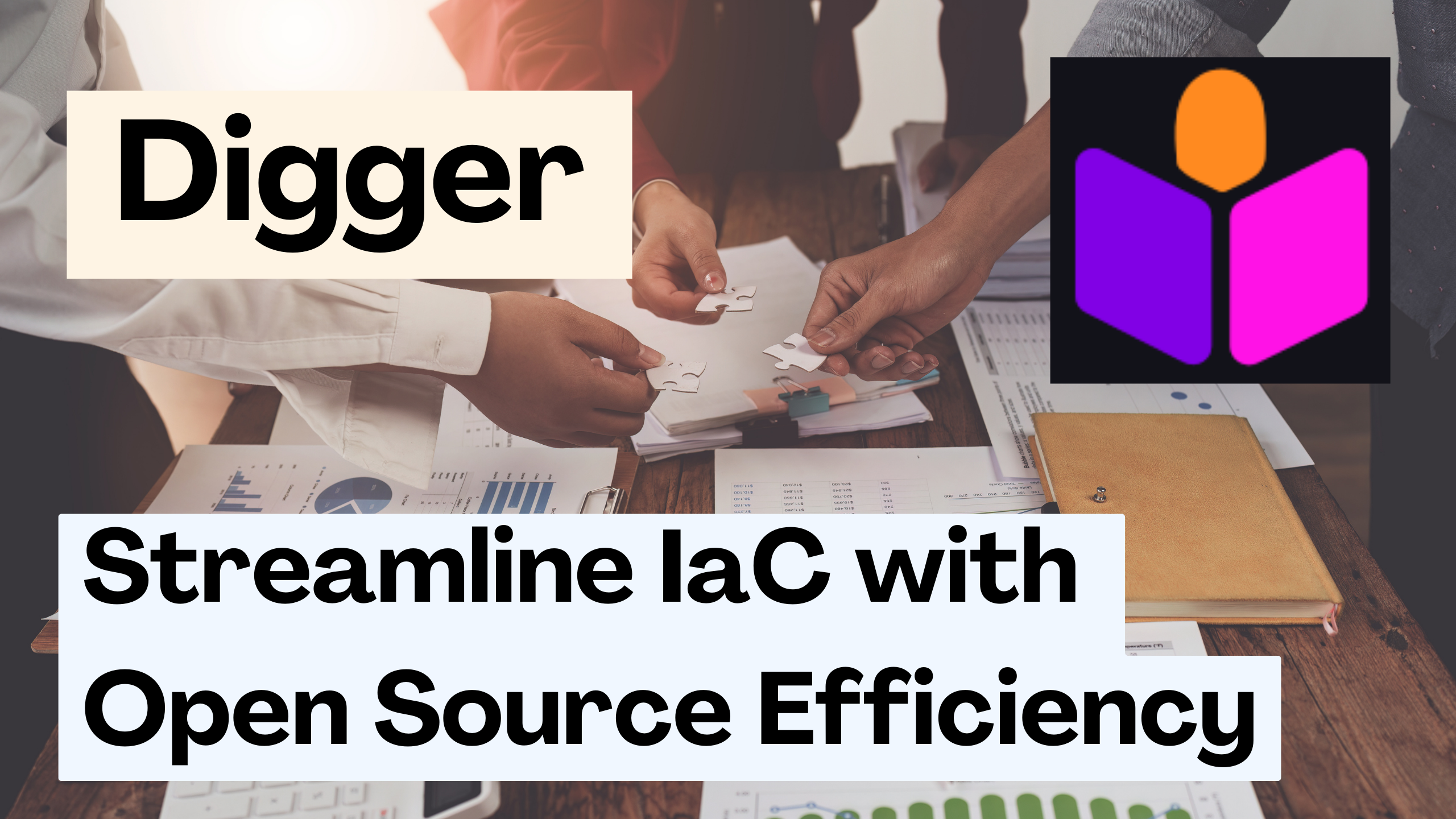Digger: Streamline IaC with Open Source Efficiency
- WebOps Platforms Bug Tracking & Feedback Software Web Development & Design


Unlocking Efficiency: Digger – Your Open Source IaC Management Tool
In the fast-paced world of software development, the efficiency of Infrastructure as Code (IaC) plays a pivotal role. Digger, an open-source IaC management tool, emerges as a game-changer by seamlessly orchestrating IaC processes like Terraform and OpenTofu within GitHub Actions. This article explores the unique features of Digger, its role in CI/CD, and the transformative benefits it brings to the table.
Understanding Digger: A Brief Overview
Digger’s Core Purpose: At its essence, Digger is an orchestrator designed to facilitate the execution of Infrastructure code, such as Terraform and OpenTofu, within the GitHub Actions CI system. Unlike traditional tools that duplicate CI functionality, Digger adheres to a revolutionary principle – “use your own compute.” By doing so, it eliminates the need for users to duplicate compute resources, such as workers and jobs, resulting in significant cost savings.
Key Features of Digger
1. Concurrent Infrastructure Changes Management
Digger empowers users to manage concurrent infrastructure changes safely. Through the implementation of locking mechanisms and approvals, it avoids conflicting modifications, ensuring a smooth workflow without crashes.
2. Pull Request Previews
One of Digger’s standout features is the ability to preview plans directly within the pull request. This functionality allows users to visualize proposed infrastructure changes, minimizing deployment surprises and enabling pre-deployment verification.
3. Simple Application with Comments
Collaboration reaches new heights with Digger’s capability to apply infrastructure changes through a simple comment command in a pull request. This streamlined approach allows any authorized user to deploy pre-validated changes seamlessly.
4. Governance with Open Policy Agent (OPA)
Digger incorporates the Open Policy Agent (OPA) to define policies, offering flexible access controls and infrastructure policies. This governance layer ensures compliance while enabling self-service capabilities.
5. Audit Trails
Full audit logs provided by Digger offer comprehensive visibility into every infrastructure change. Users can track who made the change, what was altered, and when it occurred. This feature is critical for compliance and debugging.
6. Drift Detection
Automatic detection of infrastructure drift is a standout feature. Digger identifies deviations from the defined code, allowing proactive measures to maintain environment consistency.
Digger in Action: Revolutionizing CI/CD for IaC
The central idea behind Digger is to allow Infrastructure as Code to operate within users’ CI systems, particularly GitHub Actions. This approach, using your own compute, is the cornerstone of Digger’s efficiency. The orchestrator handles critical aspects such as pull request automation, role-based access control, drift detection, remediation, and audit trails.
By adopting Digger, users not only witness a significant reduction in additional compute costs but also enjoy access to enterprise-grade features like role-based access controls and drift detection through the Digger orchestrator.
Connect with Digger: Explore, Learn, Collaborate
To delve into the world of Digger and harness its potential, consider the following options:
- Book a Demo: Engage in a no-pressure walkthrough of the product.
- Join our Slack Community: Become a part of the vibrant Digger community, where ideas and feedback flourish.
Discover More About Digger
Digger is not just a tool; it’s a community-driven innovation poised to redefine how we approach Infrastructure as Code. Join us on this transformative journey!





